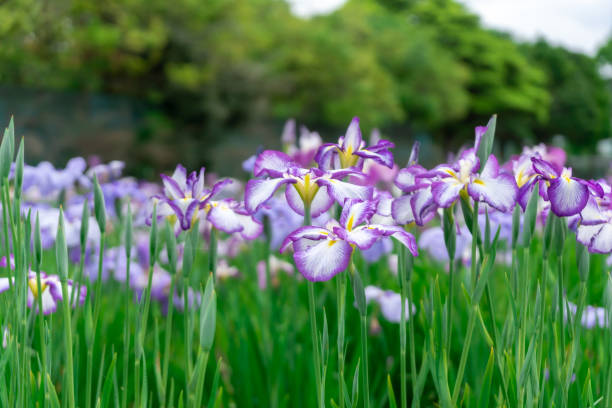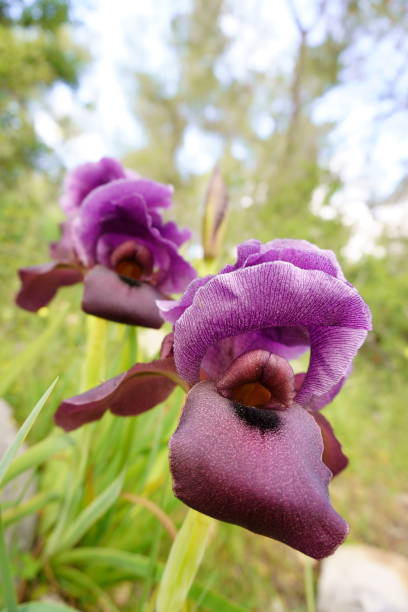Why Iris Don’t Bloom? – Common Reasons and Solutions
There are several reasons why your iris didn’t bloom. They can be suffering from overcrowding, lack of sunlight, overfertilizing or no feeding at all, poor soil nutrition, planted too shallow or too deep, over or underwatering, and mulching with lawn clippings. This article will teach you about these reasons and how to fix them. By following these tips, you can ensure that your iris flowers will start to bloom.
Table of Contents
Common Reasons Why Iris Don’t Bloom and Their Solutions

Overcrowding
Overcrowding is the biggest most common reason why iris fail to bloom. Iris are sensitive plants, and if too many of them start flowering at one time, they can’t all survive because there will not be enough space for each flower’s roots to grow properly. This leaves you with less than nice displays of blooms on your lawn or garden area and gets smaller flowers. Rhizomes increase in number as the iris develops. Overcrowding is common within two to four years of development.
For every few years, you can dig up and split the rhizomes and increase the amount of space for growth. The distance between your iris bulbs should be between 12 and 24 inches. This will lead to more blooms. A densely populated area with other rapidly expanding plants may necessitate the relocation of your iris. It will flourish if it has enough room to expand.
Lack of Sunlight
In a shady spot, an iris will grow, but it will bear few or no flowers. To bloom, the iris require six hours of daily direct sunlight. For reblooming species, full sun is particularly critical. Your iris should not be shaded by other plants or trees and should be exposed to direct sunlight.
Overfertilizing
When iris are grown in a garden with plenty of fertilizer, the plants grow lean and green. The foliage is thicker, but midsummer blooms may not be developed, or if they do appear, flowers may be few. Overfertilization also causes problems because it kills off beneficial soil microbes that can help fix nitrogen for your next crop harvest naturally at home.

No Feeding
In drier climates, iris may grow quickly and produce plenty of blooms. The growth rate does not harm the plant because it gets all its energy from other sources (sunlight and air). But plants grown in water lose their vigor if they are never fed during the summer months when nutrients run low.
Poor Soil Nutrition
It can be an issue. A soil tester is readily available at any home improvement store. Check your soil’s nitrogen and pH levels. For optimal blooms, maintain a pH level of 6.8. Soil preparation is critical for successful plant nutrition. If your soil is deficient in nutrients, start fertilizing your iris plants in the early summer. If your soil is deficient in nutrients, your iris should not require constant fertilization.
Planted Too Deep or Shallow
An iris planted too deep or in a large container may be prone to rot. Perhaps its roots did not get enough room to grow and could not develop properly due to the highly porous soil it was cultivated on. Iris are quite shallow rooted but can spread quickly, especially if you’re planting them into well-draining soils near a garden bed’s edge where there isn’t much root room for vertical growth. Rootbound areas of an iris plant cannot absorb nutrients properly, making the soil an unhealthy breeding ground for pests and diseases.
When they’re planted at too shallow of a depth, terrace your iris bed in place, so it gets good root room when grown vertically. When planting newly purchased irises or even established plants that were just repotted into fresh potting mix (versus loose-packed roots), consider putting them in garden containers first to see how well they settle into the soil before planting. Irises can survive in containers for several years, but erosion and pests are big problems when grown outdoors next to garden beds.
Overwatering & Underwatering
To make bloom, your iris will require adequate water. If the soil dries out too much between watering but not enough for a regular weekly watering schedule, then roots may become stressed at the end of each growing season when summer heat. The root system can also be permanently damaged by overwatering if you forget to water it from time to time or if you don’t know where it needs moisture most, which leads to poor watering techniques. It should be noted that irrigation may also increase the risk of rot and pests, so it is preferable to water using a syringe or slow dripper. Suppose you regularly overwater your iris plants with sustained rain-free weather, which exceeds weekly thorough saturating topsoil dryness. In that case, sodden soils can develop internal moisture levels way above normal for local climate conditions at any point during infrequent periods before digging in late winter or early spring, causing rotting and disease.
Mulching with Clippings
It’s common to over-mulch with lawn clippings in your garden because you don’t want to spend time mowing the grass. But, when you’re using leaves or bark mulch as a thick layer of material on top of the soil around iris plants, they cannot get enough sunlight and nutrients needed for full summer bloom.
